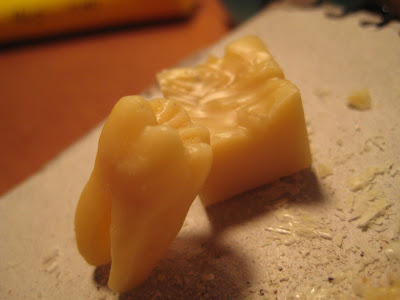Now there are many ways to get people or organizations to pay for your dental education. There are people in my class who come from undersearved states where their education is being payed for with the agreement that the student comes back to the state to practice for a given length of time. A popular rout in the south west is IHS, or Indian Health Services. Similar to many programs, the IHS trades tuition reimbersment for working on the reservation. I know that the National Guard also offers a tuition reimbersment to dental students who sign with them. There are many ways in which you can have your dental education expenses paid for other than out of your own pocket, these are the methods I am most familiar with. Of course, if you were one of those super applicants, you can always receive some sort of scholarship from the school to soften the blows.
I decided that I would apply for the Air Force HPSP. There are two ways to obtain the scholarship. First, you can be "matrix qualified" as an applicant which means you have a DAT score of greater than or equal to a 19 with a GPA of at or above a 3.5. I fell slightly short of the DAT qualification with an 18 so I was not qualified thus I had to go through the pleasant application process. I also applied to the Navy HPSP as a back up in case my Air Force application was denied. The good part about the Navy is they offer a $20k sign on bonus where the Air Force does not. I am no too fond of spending time out at sea so I pushed Air Force a little harder. Being on a ship might be cool for a week or so, but after several months I think it would become pretty old.
To make a long story short, The application process consisted of me jumping through hoops, and dancing around in a monkey suit. I finally got the call from my recruiter that I was in. I was so excited to get the scholarship I bought myself a new bike (a Felt F1 for all you bike people).
Now the scholarship pays for my tuition and school related expenses (to a degree) as well as pays me a stipend of just under 2k a month. This will all start next year as I have a 3 year contract. There are a lot of details to the contract but the bare bones of it all is that they pay 3 years, I work for them at an Air Force base for 3 years. I've always been interested in the military, afterall who wouldn't want to be surrounded by all the cool stuff on a military base. All I need to do is find out how I can get my hands on one of those F-16s.
Here I am just after getting sworn in by Col. Terry. He runs the dental clinic at Luke AFB. I have sworn to protect this country from enemies foreign and domestic, so if you do anything suspicious, it's my duty to split your lip.

Here is my "coin". I received this from my recruiter the day I was sworn in. I call it my "butter bar". This is the symbol for a 2nd Lieutenant. I am now a 2nd Lt and will be promoted to a captain after I graduate dental school. I really don't know what all of this means, military people tell me that it means people will have to salute me. As long as my school gets paid for, people can call me whatever they want. I guess there is a coin tradition within the AF. If you challenge someone to a "coin challenge" and they fail to present a AF coin, then they have to buy you a drink. You know you've made it in this life when you get to carry a butter bar coin around to win free drinks all day.





